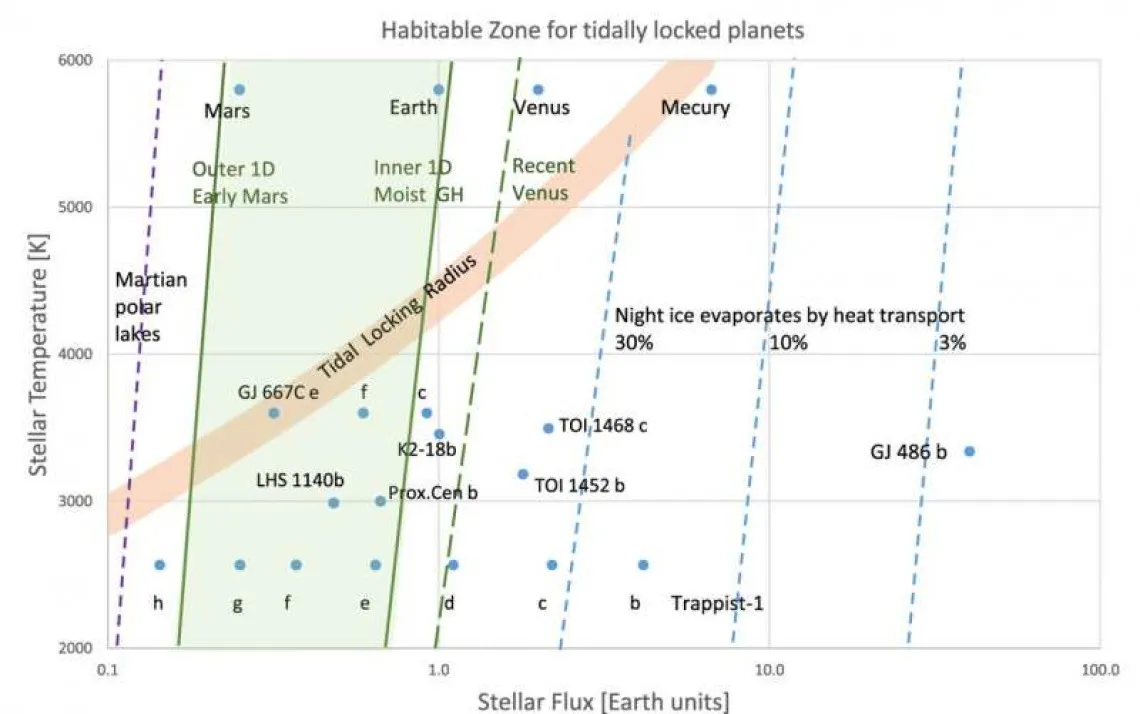Subglacial Water Could Extend the Classical Habitable Zone of Exoplanets

Boundaries of the Habitable Zone under various climate and atmospheric models as a function of radiative flux received from the host star, relative to Earth
Professor Amri Wandel, from Hebrew University of Jerusalem, has unveiled research that promises to redefine our comprehension of habitable exoplanets. In a recent study published in The Astronomical Journal, Professor Wandel introduces the concept of subglacial liquid water as a pivotal element in broadening the boundaries of the conventional habitable zone.
The classical habitable zone, often colloquially referred to as the "Goldilocks zone," typically defines the region around a star where conditions allow the presence of surface liquid water and, by extension, life as we understand it. However, Professor Wandel's research offers a fresh perspective by illustrating that the existence of subglacial liquid water can considerably extend this zone.
One of the primary discoveries of this research is the potential to expand the habitable zone inwards for tidally locked planets closely orbiting M-dwarf stars, which are frequently regarded as candidates for detecting spectral evidence for life (so called biosignatures) in exoplanets. The study delineates how an atmosphere and liquid water could coexist on these planets, pushing the limits of the habitable zone further than previously assumed.
Moreover, the research postulates that subglacial liquid water can also broaden the habitable zone beyond the outer limits of the conservative habitable zone. These findings unlock the possibility of liquid water on a more diverse range of exoplanets than previously envisioned, presenting tantalizing opportunities for the search for extraterrestrial life.
